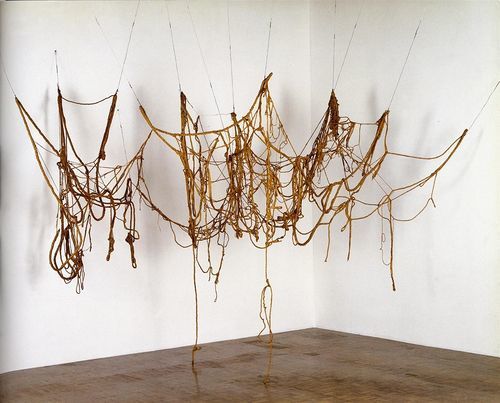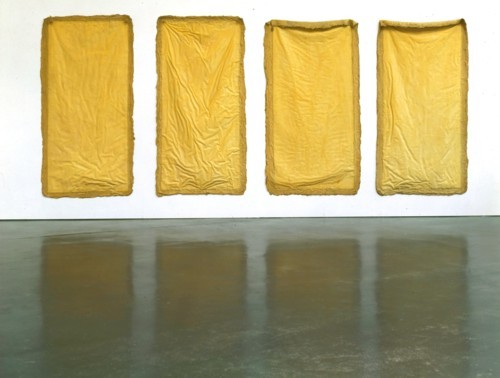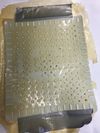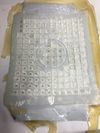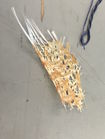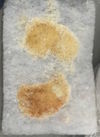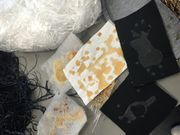Difference between revisions of "User:Melisacola"
Melisacola (talk | contribs) |
Melisacola (talk | contribs) |
||
| Line 1: | Line 1: | ||
<font face="Letter Gothic Std" color="black"> | <font face="Letter Gothic Std" color="black"> | ||
| + | |||
| + | Melisa | ||
| + | Bonding and Fusing | ||
0877883@hr.nl | 0877883@hr.nl | ||
| − | |||
| − | |||
| − | |||
| − | |||
==WHY I MAKE == | ==WHY I MAKE == | ||
===5 sentences=== | ===5 sentences=== | ||
| + | |||
1. To express | 1. To express | ||
| Line 28: | Line 28: | ||
Latex as found in nature is a milky fluid found in 10% of all flowering plants (angiosperms). It is a complex emulsion consisting of proteins, alkaloids, starches, sugars, oils, tannins, resins, and gums that coagulate on exposure to air. It is usually exuded after tissue injury. In most plants, latex is white, but some have yellow, orange, or scarlet latex. Since the 17th century, latex has been used as a term for the fluid substance in plants. It serves mainly as defense against herbivorous insects. Latex is not to be confused with plant sap; it is a separate substance, separately produced, and with separate functions.=== | Latex as found in nature is a milky fluid found in 10% of all flowering plants (angiosperms). It is a complex emulsion consisting of proteins, alkaloids, starches, sugars, oils, tannins, resins, and gums that coagulate on exposure to air. It is usually exuded after tissue injury. In most plants, latex is white, but some have yellow, orange, or scarlet latex. Since the 17th century, latex has been used as a term for the fluid substance in plants. It serves mainly as defense against herbivorous insects. Latex is not to be confused with plant sap; it is a separate substance, separately produced, and with separate functions.=== | ||
| − | == | + | ===Inspiration=== |
| + | |||
| + | I knew i wanted to focus on material pretty early and i was inspired by de work of Eva Hesse. She was a sculptor known for her pioneering work in materials such as fiberglass, and plastics. She is one of the artists who ushered in the post-minimal art movement in the 1960s. Her work often shows minimal manipulation to a material while simultaneously completely transforming it. | ||
| + | |||
| + | |||
| + | 1. [[File:Eva-hesse.JPG|500px|Caption]] 2. [[File:Eva1.jpg|535px|Caption]] | ||
| + | |||
| + | 1. Eva Hesse's "Untitled (Rope Piece)" (1970) was made when the artist was dying. | ||
| + | 2. Aught, 1968, Latex, canvas, polyethylene sheeting, rope and unidentified materials, metal grommets | ||
| + | |||
| + | I'm not that focussed on manipulating materials in my work so far, but i always had an interest in working in layers. Layers can create an different interpretations from the viewers, depending on the area it's put and the position of the viewer. | ||
| + | To me latex was an interesting material to work with cause of the transparency it creates when you cast it on all at once, instead of layer after layer which people use to create a mall. | ||
| + | |||
| + | ==TECHNIQUES== | ||
| + | |||
| + | 1. Started making prints with rubber, but it fused together | ||
| + | |||
| + | 2. Working in layers to create rubber | ||
| + | |||
| + | 3. Combining with textiles | ||
| + | |||
| + | |||
| + | It is usually applied using a disposable sponge and would take about five to ten minutes to dry depending on how thick it is applied. As it dries it solidifies to a rubbery consistency and in the processes ends up shrinking. As the latex dries it becomes very sticky and will stick to itself if accidentally folded over. Alternatively, shimmer powders can be dusted over dried liquid latex to create metallic effects. One advantage to the tackiness of liquid latex is that it can act as an adhesive to attach things to the paint. Liquid latex is removable by peeling it off since water does not reactivate it. | ||
| + | |||
| + | [[File:Latexrubber.jpg|100px|Caption]] [[File:Rubber.jpg|100px|Caption]] [[File:IMG_6007m.jpg|105px|Caption]] [[File:IMG_6008m.jpg|100px|Caption]] [[File:IMG_6012m.jpg|180px|Caption]] | ||
</font> | </font> | ||
Revision as of 21:15, 20 April 2016
Melisa
Bonding and Fusing
0877883@hr.nl
WHY I MAKE
5 sentences
1. To express 2. To learn how to control materials 3. To bond and collaborate 4. To communicate with visuals 5. To own my emotions
Essay
My way of making comes from a personal interest and need. My mind can be all over the place and making something from scratch can get things straight for me. I'm not great with words and i tend to overthink things if i keep ideas in my head to long, so for me the process of making and reflecting makes things clear for me.
LATEX
Latex is a stable dispersion (emulsion) of polymer micro particles in an aqueous medium. It is found in nature, but synthetic latexes can be made by polymerizing a monomer such as styrene that has been emulsified with surfactants.
Latex as found in nature is a milky fluid found in 10% of all flowering plants (angiosperms). It is a complex emulsion consisting of proteins, alkaloids, starches, sugars, oils, tannins, resins, and gums that coagulate on exposure to air. It is usually exuded after tissue injury. In most plants, latex is white, but some have yellow, orange, or scarlet latex. Since the 17th century, latex has been used as a term for the fluid substance in plants. It serves mainly as defense against herbivorous insects. Latex is not to be confused with plant sap; it is a separate substance, separately produced, and with separate functions.===
Inspiration
I knew i wanted to focus on material pretty early and i was inspired by de work of Eva Hesse. She was a sculptor known for her pioneering work in materials such as fiberglass, and plastics. She is one of the artists who ushered in the post-minimal art movement in the 1960s. Her work often shows minimal manipulation to a material while simultaneously completely transforming it.
1. Eva Hesse's "Untitled (Rope Piece)" (1970) was made when the artist was dying. 2. Aught, 1968, Latex, canvas, polyethylene sheeting, rope and unidentified materials, metal grommets
I'm not that focussed on manipulating materials in my work so far, but i always had an interest in working in layers. Layers can create an different interpretations from the viewers, depending on the area it's put and the position of the viewer. To me latex was an interesting material to work with cause of the transparency it creates when you cast it on all at once, instead of layer after layer which people use to create a mall.
TECHNIQUES
1. Started making prints with rubber, but it fused together
2. Working in layers to create rubber
3. Combining with textiles
It is usually applied using a disposable sponge and would take about five to ten minutes to dry depending on how thick it is applied. As it dries it solidifies to a rubbery consistency and in the processes ends up shrinking. As the latex dries it becomes very sticky and will stick to itself if accidentally folded over. Alternatively, shimmer powders can be dusted over dried liquid latex to create metallic effects. One advantage to the tackiness of liquid latex is that it can act as an adhesive to attach things to the paint. Liquid latex is removable by peeling it off since water does not reactivate it.
